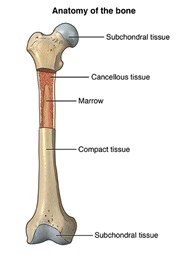Injectable Corticosteroids
Corticosteroids are potent drugs used to reduce inflammation in the body's tissues. They are different from anabolic steroids. These are illegally used by some athletes to increase muscle tone.
Corticosteroids can come in several forms: pills, liquids, creams, ointments, medicines sprayed into the nose, and injectable medicines.

Corticosteroid injections can treat a variety of skeletal, muscular, and spinal conditions. Some of these injections can be performed by your health care provider during a routine clinic visit; others need a referral to a pain or other specialist.
Here are some of their most common uses:
-
Osteoarthritis. People with osteoarthritis often develop pain and inflammation in their joints. An injection of corticosteroids into the affected joint can give temporary pain relief for several weeks or months. After the treatment, your health care provider may recommend avoiding strenuous activity for at least 24 hours for the best results.
-
Low back pain. Lower back pain from ruptured disks, spinal stenosis, and some other conditions may be treated with injectable corticosteroids to provide some relief. Lumbar radiculopathy is pain in the buttocks, hips, or legs that comes from a pinched nerve in the lower back. This type of pain can often be treated with corticosteroid injections near the pinched nerve. Sometimes other drugs like local anesthetics are given with the corticosteroid.
-
Cervical radiculopathy. This is neck pain that radiates to the shoulder, arm, or hands. It happens when the vertebrae in the spine move closer together or a disc bulges or ruptures, pinching a nerve in the neck. Injecting corticosteroids near the pinched nerve may reduce swelling and relieve pain. This gives the nerve some time to heal.
- Bursitis and tendonitis. Bursitis is a common condition that happens when the fluid sac that normally cushions spaces between bones, muscles, and skin becomes inflamed and painful. Tendonitis is a common condition in which the tendons around muscles and bones become inflamed. The areas that are commonly affected are the elbow, knee, shoulder, wrist, hand, and hip. Injected corticosteroids can reduce the inflammation. But you must be careful because repeated steroid use can cause the tendon to weaken or even rupture.
- Carpal tunnel syndrome. This condition happens when a nerve in the wrist becomes compressed or pinched, causing pain, numbness, tingling, and possibly weakness in the hand. Injecting a corticosteroid into the wrist can give immediate, though temporary, relief. An anesthetic like lidocaine may also be given with the steroid.
Cautions about corticosteroids
Corticosteroids can have a number of side effects, including high blood sugar levels. For this reason, people with diabetes are advised to tell their health care providers about their condition before taking any steroid medicines.
Using injectable corticosteroids for a long period of time is not suggested because of additional side effects. These include osteoporosis, cataracts, delayed growth, stomach ulcers, skin atrophy and depigmentation, and high blood pressure. You may experience short-term side effects like local pain or infection at the injection site. Your health care provider will usually limit your total number of corticosteroid injections to 3 to 4 a year.
If you are considering taking corticosteroids to treat a muscular or skeletal condition, be sure to talk with your health care provider about all the benefits and risks.





